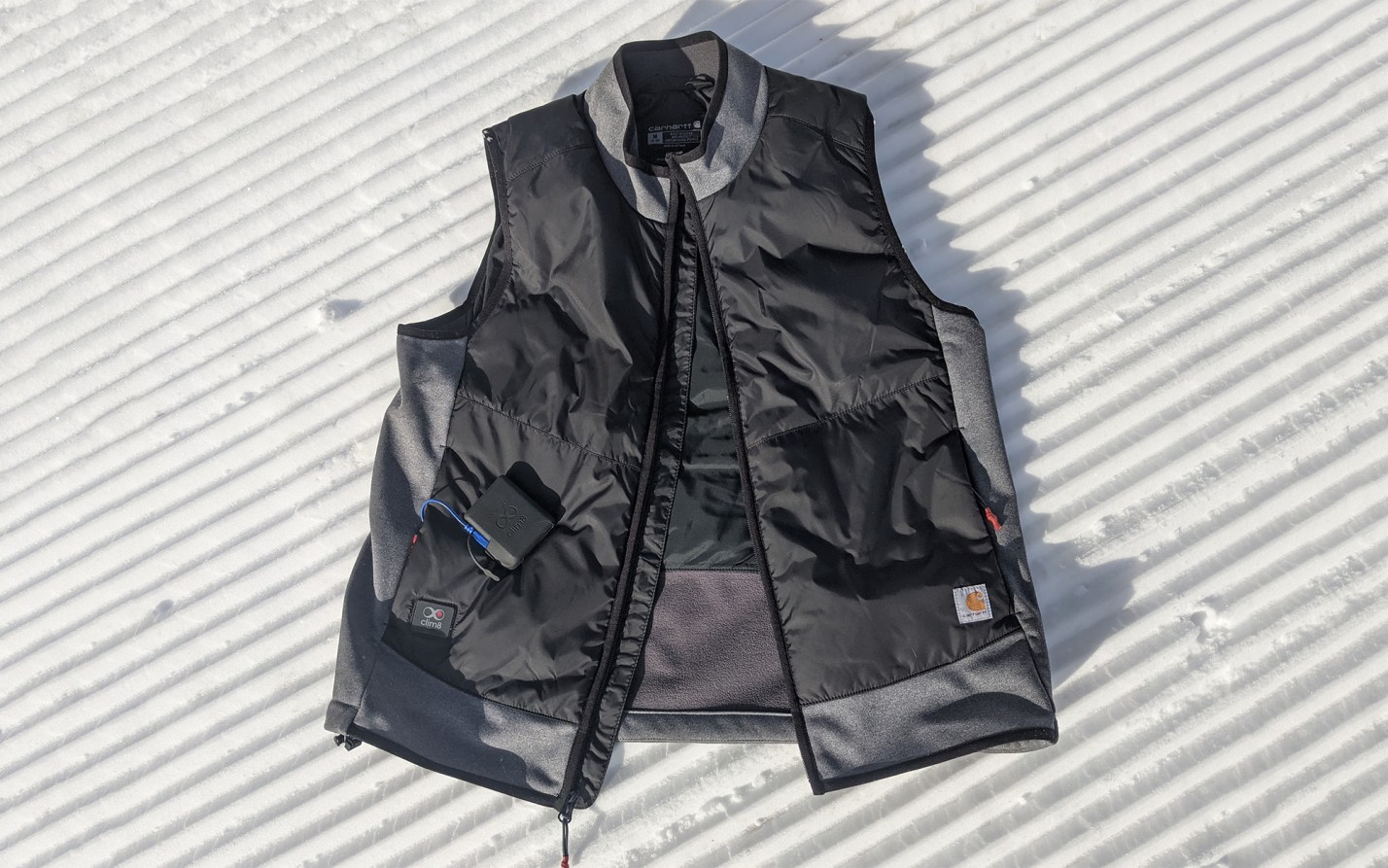We may earn revenue from the products available on this page and participate in affiliate programs. Learn More ›
Anyone who spends time in the outdoors is familiar with the layering dance: throw layers on, then take them off, unzip the pit vent, cinch the hood, repeat. It’s such a fact of life that hikers and backpackers don’t even pretend that they can get away with just one hiking jacket—we’re always talking about “layering systems.”
The Carhartt X-1 Smart Heated Vest aims to do away with all this. The vest has a sensor, located near the battery in the front hip pocket on the right side, that is constantly measuring temperature. When the heat dips below the set temperature, the heating mechanism increases. When the sensor reads that the temp has risen sufficiently, it turns down the heating mechanism or shuts it off entirely. There are also personalized settings in the accompanying app that account for your natural temperature changes and activity levels so that the vest will learn, remember, and react accordingly over time.
As someone who can get cold even while wearing four layers, this is a concept I can get behind. I put the Carhartt X-1 to the test this winter to see if it would replace my layering system or if it’s just another gadget I’ll leave in the closet.
Carhartt X-1 Smart Heated Vest Keys Features and Specs
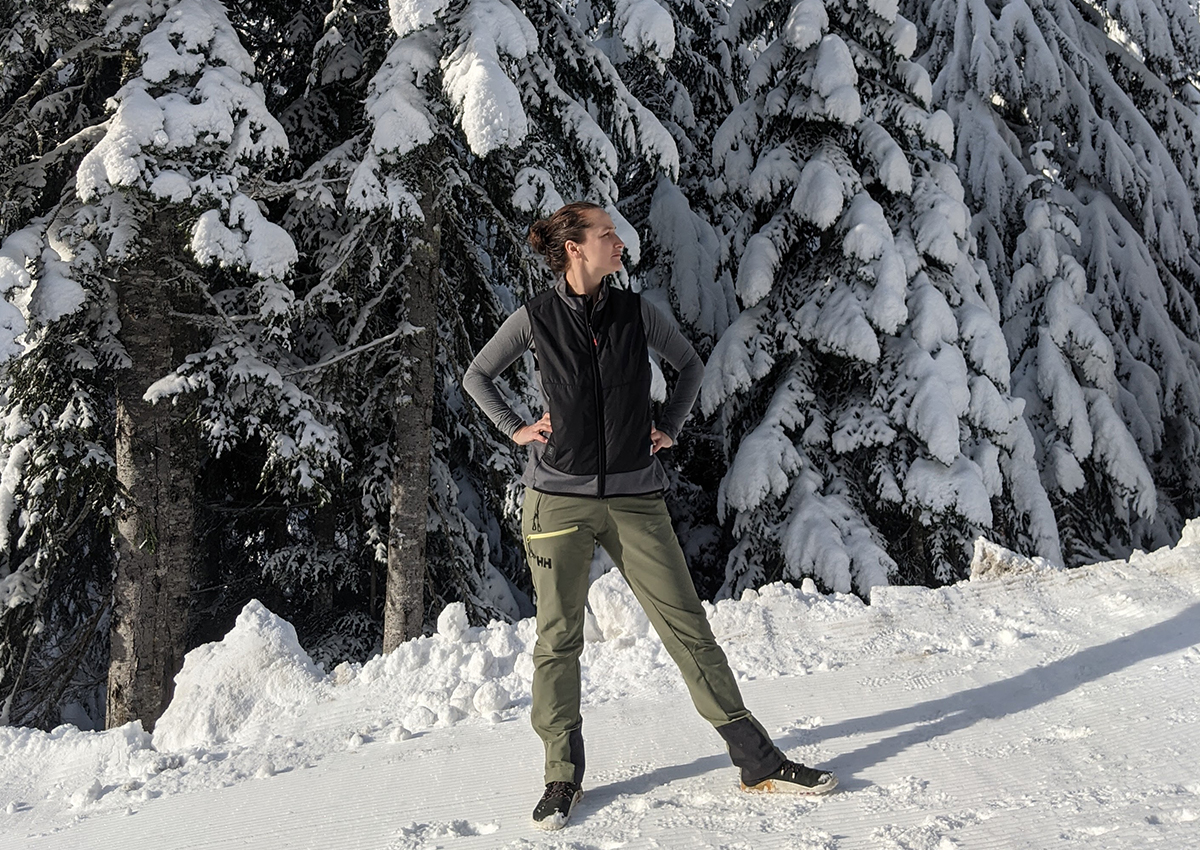
- Sizes: XS to 3XL
- Material: Nylon and polyester
- Includes one battery
- Battery Size: 3,000mAh
- Bluetooth compatible (app required to operate)
- Two zip pockets at the hips
- Cinch cord at the hem
- DWR finish
- Available for purchase February 1, 2023
The App
To set the temperature to your preferred set point, you’ll need to use the associated app (there is no way to do this manually). Fortunately setting up the app is surprisingly easy. After connecting the vest via bluetooth, you just answer a few simple questions. The most helpful question asked is whether you think you run hot or cold. It also asks about your preferred activities: run, hunt, hike, mountaineering, motorcycle, road bike, mountain bike, snowmobile, ski, snowboard, or cross-country ski.
This all makes sense, as your body type and activity preferences will affect the rate at which you need to warm up or cool down.
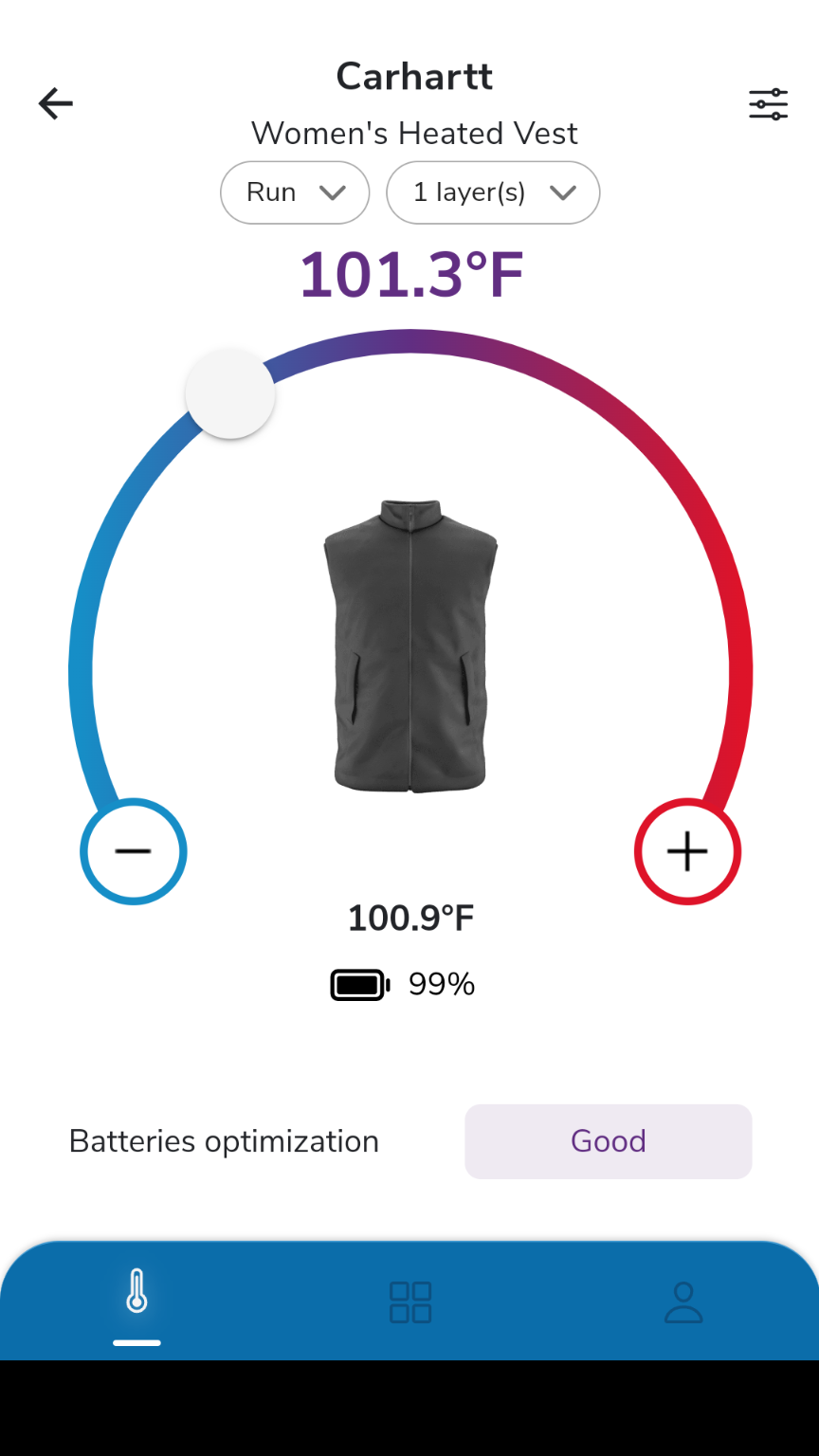
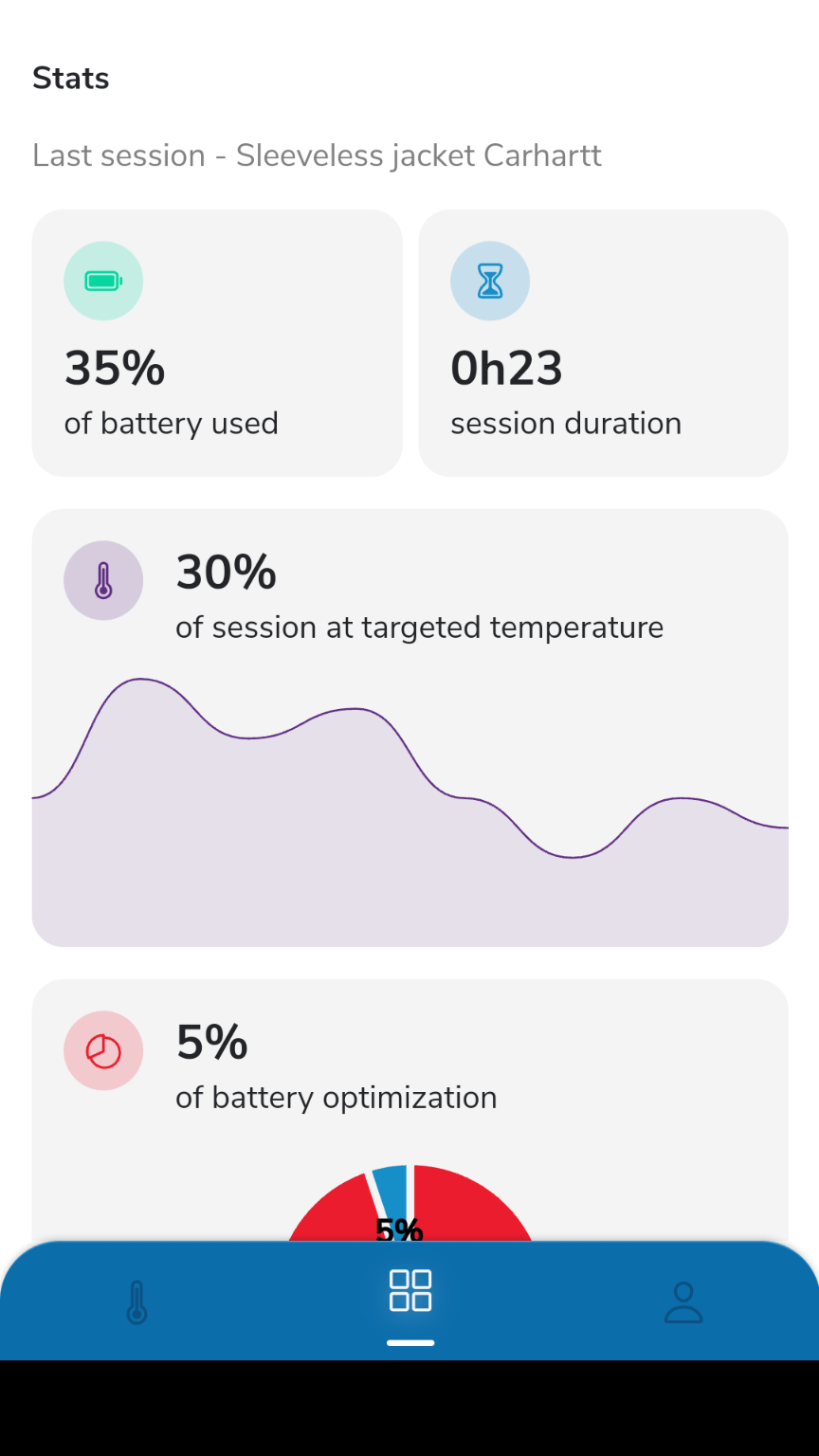
Testing the Carhartt X-1 Smart Heated Vest
The app also asks about what clothing you plan to layer with the Carhartt X-1, including things like T-shirt, technical base layer, heavy fleece, and wool pullover (but not shell layer). According to Carhartt, the answers to these questions affect how responsive the heating mechanism is to perceived changes in the temperature due to the weather and your activity level.
When you put on the vest and plug in the battery, the vest starts to heat up immediately, slowing down when it reaches a set temperature. While other heated vests have a specific heat setting, the Carhartt X-1 is constantly adjusting to achieve your ideal temperature. As you start to move and your core heats up, the vest will automatically start to cool off. You can also provide feedback to the app at the rate at which it cools off or heats up, so that it can adjust its settings to your preferences in the future.
Read Next: The Best Heated Vests
I wore the Carhartt X-1 Smart Heated Vest on my daily rounds for several weeks during winter—running, walking, and working from my patio—to get a feel for how it responds to different levels of activity at different temperatures. I also monitored how long it took for the battery to charge and the reliability of the app’s feedback over time.
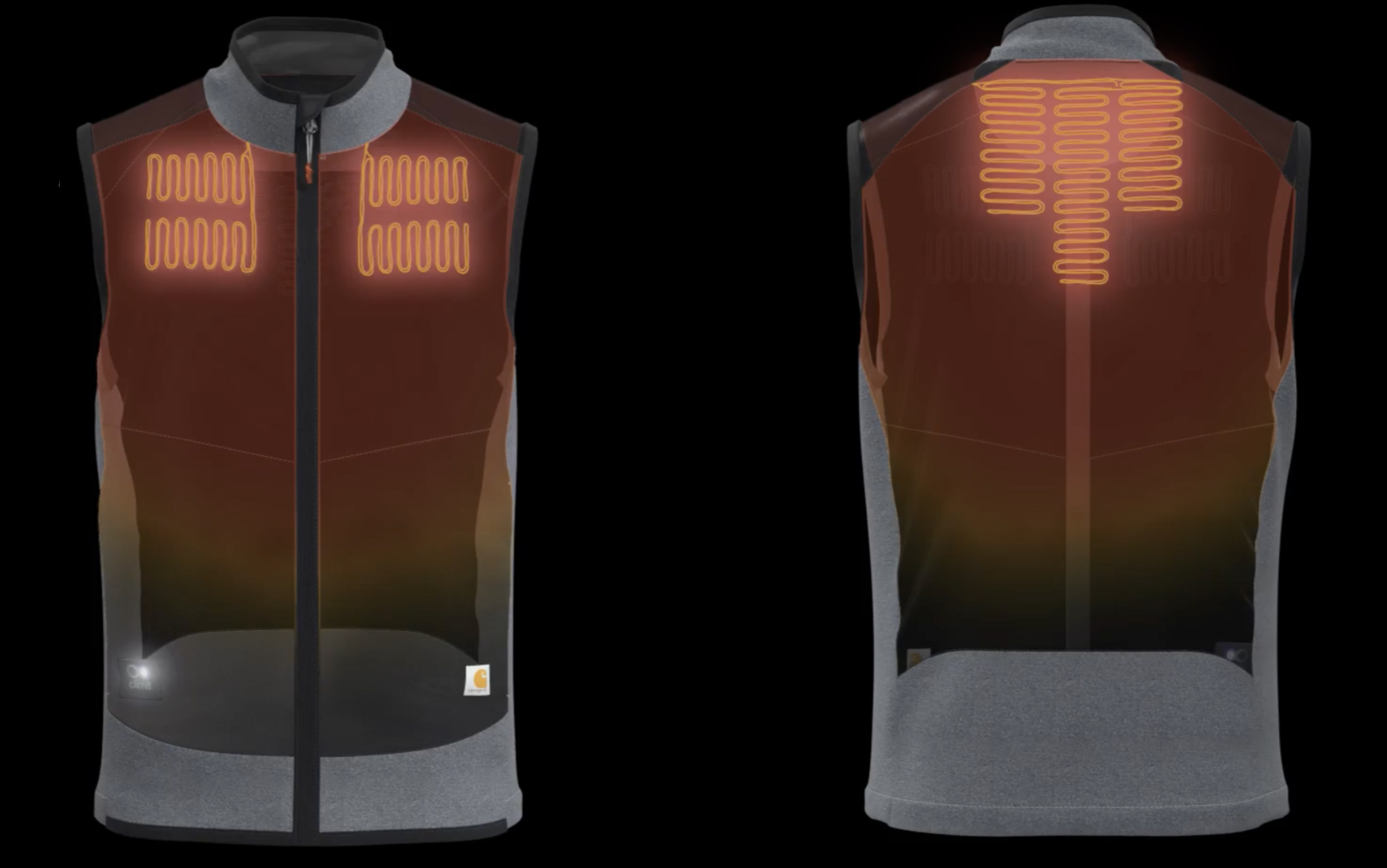
In addition to testing how long it took for the battery to deplete, I also looked at how much of the battery was going to monitor the temperatures of the vest (as opposed to actually heating).
What the Carhartt X-1 Smart Heated Vest Does Best
The Carhartt X-1 heats up fast. During testing, it reached a comfortable 101.3 in only a couple of minutes. Better, it adjusted the temperature fairly seamlessly. More often than not I would simply forget that I was wearing a heated vest until I realized that I was staying comfortable in significantly cooler temperatures than usual. (Whenever I did notice that I was getting cold it would invariably turn out to be because the battery had died.)
I also liked how thin the Carhartt X-1 is, easily layering underneath puffer jackets and rain jackets—which you’ll want to wear if the weather turns too inclement. One of the best puffer jackets will help to extend the life of the battery, but keep in mind that the vest is not waterproof (although it does have a durable water repellent finish in the event of light sprinkles). You’ll need to protect the electronic heating components from serious downpours. Otherwise, it looks and feels just like any other vest, but can consistently maintain your set temperature.
How the Carhartt X-1 Smart Heated Vest Can Improve
By far, the most extreme temperature change I’ve ever experienced was at the Grand Canyon in March. When we started our hike on the 4-mile Bright Angel Trail, at the top of the rim, it was still well below freezing: errant puddles were frozen solid, our breath steaming in the air. But as we followed the snowy trail down into the canyon, and the day wore on, the temps started to creep up. Soon, the snow disappeared and our layers were stuffed into overflowing daypacks. By the time we hit the river, I was wearing shorts and a tank top and it was over 80 degrees. The hike back up was the same story in reverse, but with sweat added in. The trail for the last half mile was still covered in snow. At the top, I was cold and wet, despite wearing every item of clothing I had with me.
Is the Carhartt X-1 the solution for an adventure like I had in the Grand Canyon? Unfortunately, probably not.
By far, the biggest issue with the Carhartt X-1 is the battery. It just isn’t very powerful. Time and again, I would notice that I was getting cold and look down, only to discover that the battery had died. The battery issue was such a problem that even working inside my home, with the thermostat set to 65 degrees (still cold for me, who would like it to be eternally 72), the battery would give out before the work day was over.
At one point, I plugged a fully charged battery into the vest, set the temperature to 101, and set it outside in 35-degree weather. The battery gave out in less than three hours. Given this, most people will need at least two, and possibly three, fully charged batteries to get through a day in typical cold-weather temperatures. Unfortunately, at this time, Carhartt does not have plans to sell additional batteries. (The battery takes hours to recharge and, per the instruction manual, must be done indoors rather than in the field using one of the best power banks for camping.) When backpacking, skiing, or hunting you should not rely on this vest’s limited battery life to keep you safe in freezing temperatures.
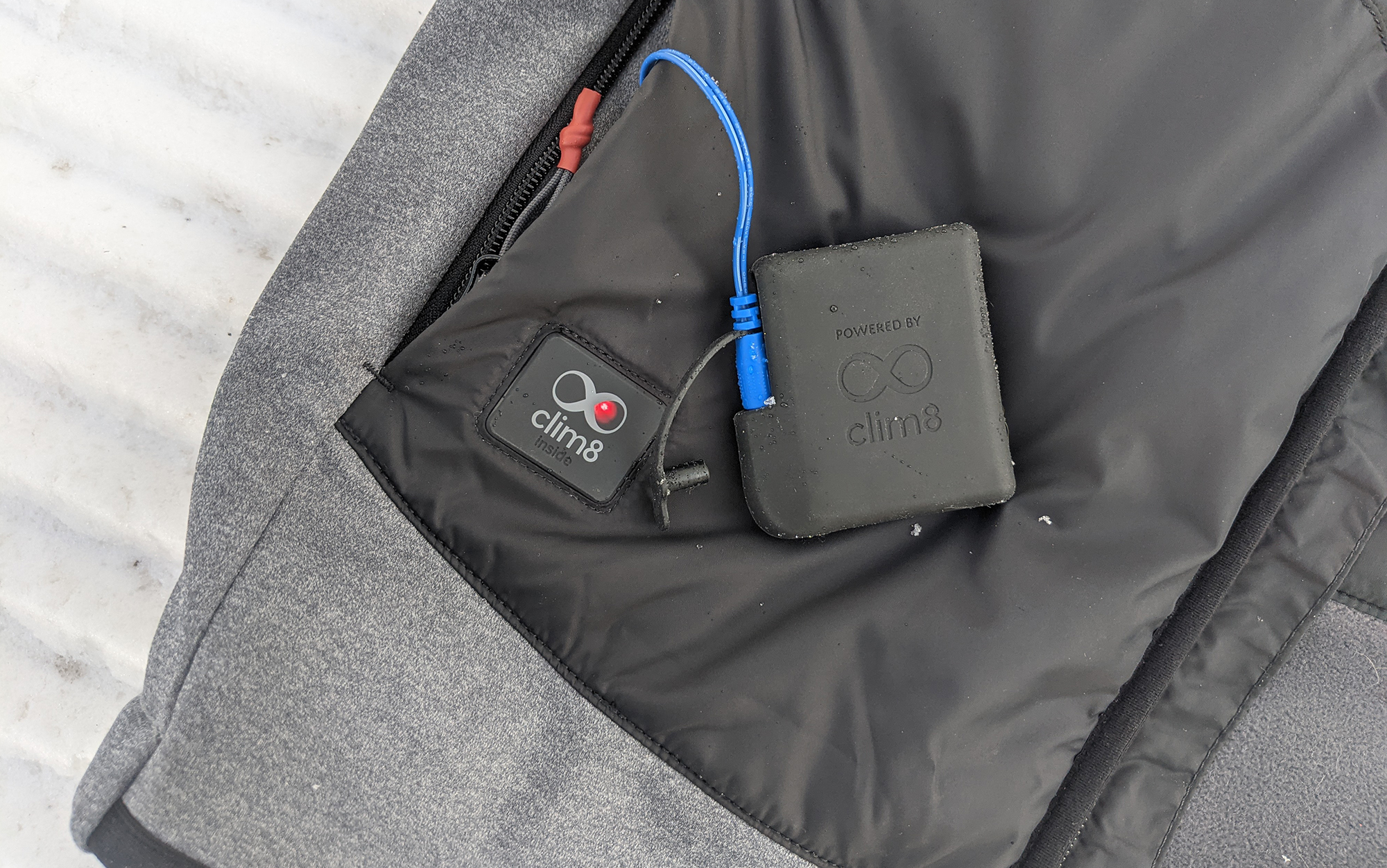
The battery for the Carhartt X-1 plugs in inside the right pocket. While most of the best heated vests have a separate pocket for the battery, that is not the case here. It’s the same pocket where you’d stick your hands to warm them up or stash a tool.
Final Thoughts
While a too-small battery will likely keep the Carhartt X-1 Smart Heated Vest from replacing any layers in a hunter’s or hiker’s kit at present, pre-dawn starts, walking the dog, and lift rides are all made more comfortable by a Smart Heated Vest. Similarly, if you start the morning bundled up in your car and as soon as the heating kicks in, find yourself sweltering, you won’t have to sneak off your coat with one hand on the wheel. Instead, with the Carhartt X-1, I could just focus on finishing my coffee before arriving at the trail head.
I look forward to seeing where this technology goes in the future. While warming your core, as the Carhartt X-1 does, is vital to keeping your body warm, more sensors and more heating elements could go a long way. Then on days where freezing temps and Type II fun mean you are both working up a sweat and losing feeling in your fingers at the same time, the AI could take over and make things a little more comfortable.
